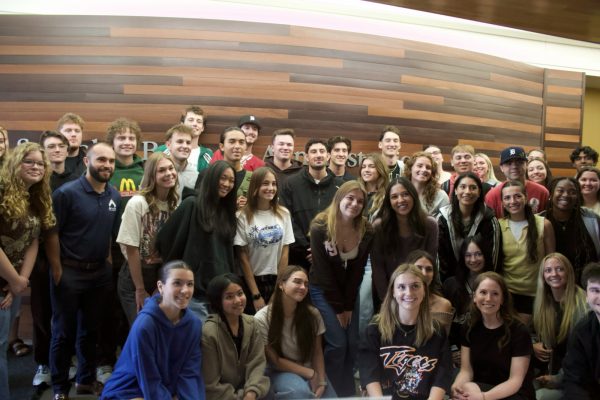The math behind disease
An Oakland University professor is using mathematical models to track the spread of life-threatening illnesses across populations.
Anna Spagnuolo, who teaches calculus I and II in the department of math and statistics, became interested in the practical applications of math early in her college career.
“I particularly enjoyed learning the motivation behind solving mathematics problems,” she said. “Whether it be to get a result in physics or to count the number of license plates that could be made using a certain number of letters and numbers.”
Inspiration strikes
After having completed her undergraduate and master’s work at OU, Spagnuolo said her breakthrough moment occurred while completing her doctoral degree at Purdue.
One day, a speaker came to talk about the spread of cesium-137, a radioactive isotope of a metallic element,and the effect it had on an impoverished area of Brazil.
“The speaker went into detail about how children discovered it and put it on the rocks they were playing with to make them glow,” she said.
The Environmental Protection Agency says high levels of exposure to the isotope can lead to death — four people died in the incident, a result of the community being unaware of the danger.
The speaker’s tragic story inspired Spagnuolo to study the spread of nuclear waste.
At the beginning of the new millennium, there was a proposal to store radioactive material in containers in the Yucca Mountains in Nevada.
Spagnuolo said in her doctoral thesis that as cracks developed in the mountainside, the waste would flow more rapidly into the surrounding reservoir.
Although she does not know if her publication factored into the decision, the plan has been put on hold.
The work begins
More recently, Spagnuolo has focused her attention on the spread of two potentially deadly diseases: cholera and Chagas disease.
Cholera is spread by ingesting water contaminated with the bacteria.
According to the World Health Organization, in the last two years there have been outbreaks in parts of the Caribbean, Africa, India and Southeast Asia.
Once inside the body, the bacterium depletes its victim of water and necessary electrolytes. It can kill within three days.
Spagnuolo was able to use a 3-D model of the human intestine along with equations to simulate the spread of the illness on a computer.
“One of the computer outcomes shows that if an inexpensive water treatment or medication can be found that stops the bacteria from swimming, then bacterial colonization would be greatly reduced so that less water would be secreted in the intestine,” she said. “In this case, the patient could survive the infection.”
Disease by the numbers
Spagnuolo’s colleague Libin Rong, an associate professor in the department of mathematics and statistics, described what makes her work so difficult.
“She usually formulates the system into a complicated partial differential equation,” he said. “That means there are several variables involved. The numerical method to solve this equation is difficult, so we really need to develop some new methods to solve these equations.”
Spagnuolo has also tracked Chagas disease through a process of mathematical modeling.
Chagas disease, found in Central and South America, is spread to mammals through bugs infected with a parasite. According to the National Institutes of Health, symptoms include fever and fatigue in the acute stage. Later stages, which can come as late as 20 years after the initial infection, may be characterized by abdominal pain and difficulties swallowing.
One of Spagnuolo’s tests centered on the hypothesis that placing chickens that are not affected by the disease in a village could reduce the spread of the disease to humans and domesticated pets on the theory that the bugs would bite the chickens more frequently.
“Our mathematical simulations reveal that the answer is no,” she said. “It turns out that, under our model assumptions, adding chickens to the village homes actually increases the total number of bugs in the homes. And, as a result, the number of infected humans and infected domestic mammals also increases.”
Insecticides don’t work either. Enough bugs survive that in five years that the infected population is the same as it was prior to spraying.
Spagnuolo said that keeping pets outside the home could help alleviate the problem, along with thicker plaster walls.
Spagnuolo is now working on a project in conjunction with researchers at several universities to help FEMA determine the outcome of hurricanes for emergency preparedness.
—-Contact staff reporter Kevin Graham via email at [email protected] or follow him on Twitter @KevinGraham88





